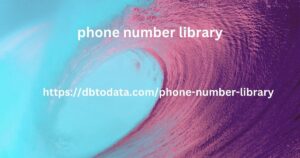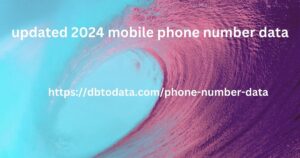Your cart is currently empty!
Author: fdlkjeo
SendPulse Alternatives: Email Marketing Features, Pricing, and More
When it comes to email marketing, SendPulse is a popular platform known for its wide range of features, but it’s not the only option. Whether you’re looking for more advanced automation, different pricing plans, or additional sms promotional campaign marketing tools, there are several SendPulse alternatives to consider.
In this article, we’ll explore some of the top SendPulse alternatives, comparing their features, pricing, and overall value. By the end, you’ll have a better understanding of which platform is right for your business’s unique needs in building successful email marketing campaigns.
SendPulse Alternatives
- Brevo (formerly SendinBlue )
- HubSpot
- Omnisend
- McLellan
- Mailgun
- MailPoet
- SendGrid
- Emma
Why Email Marketing?
Email marketing is arguably the most effective strategy out there. Large corporations and independent SMEs can equally benefit from this kind of software. The overall benefits of email marketing are something everyone can appreciate, regardless of size.
- It costs less than almost any other marketing channel.
- With the click of a button, you can reach a global audience.
- Email audiences are typically engaged when they opt-in to receive email advertising.
- Easily send your message to the right customer at the right time
- Emails = impulse buys! Increased conversions = more business.
- It’s quick and easy to set up and track.
- Most people check their email at least once a day, so they are likely to see your ad on the same day you send it.
- The potential return on your investment is unmatched by any other marketing strategy.
- It builds connection and a sense of community for your customers.
Using email marketing software like SendPulse makes this process so easy. If you want to take your company to the next level, start considering this strategy.
SendPulse Alternatives
Although SendPulse is a name that a lot of people have heard of right now, it’s not the only option. There are a lot of email marketing software providers out there to choose from. Here are eight of the best SendPulse alternatives for email marketing.
SendPulse Alternatives: Brevo (formerly SendinBlue )
Widely regarded as one of the best in the industry, Brevo does it all. Using a combination of intelligent automation and premium engagement features, Brevo is a one-stop shop for your marketing needs.
advantage
- It combines multiple connectivity features in one place. You can build your entire campaign in one place.
- The selection of email templates is excellent. You can choose from over 60 responsive and layouts.
- Use the segmentation feature to create smaller targeted campaigns.
- Access a shared inbox to keep track of everything going on.
shortcoming
- For someone looking for a simple service, this many features might be a bit overwhelming.
- The free tariff has lower email limits.
- Users often complain about slow system performance.
Pricing Structure
You can send up to 300 emails per day for free. Prices start at $9 per month for up to 5,000 emails per month. Brevo offers four plans: Free, Starter, Business, and Enterprise.
The Business plan is a more advanced package designed to run more complete campaigns for larger businesses. It offers the same 5,000 emails per month as the Starter plan, but also includes marketing automation , advanced statistics, multi-user access, A/B testing, and more.
Anything 10 countdown timer popup examples and ideas more would require a dedicated quote from a company under the Enterprise plan.
Who is it best for?
A medium to large company that wants to strengthen its marketing strategy and take its business to the next level.
HubSpot
Innovation and simplicity don’t usually go hand in hand, but Hubspot has found a way to do it in this list of Sendpulse alternatives. Smart marketing in one uncluttered, easy-to-navigate platform. Marketing beginners will definitely appreciate Hubspot’s approach and the way it impacts their business.
advantage
- The Hubspot email integration feature is second to none.
- The interface is very user-friendly and easy to navigate.
- If you’re a small business, free services are very viable!
shortcoming
- Initial pricing can be japan data misleading and gradually goes up as you add more features.
Pricing Structure
Hubspot’s pricing structure is divided into two categories: Enterprise and Individuals & Small Teams. The Individuals & Small Teams pricing structure is further divided into three plans – Free Tool, Marketing Hub Starter, Starter Customer Platform, and Marketing Hub Professional.
Hubspot’s free service includes all the marketing essentials that small and medium-sized businesses need. If someone decides to move to the Marketing Hub Starter plan, packages start at around $15 per seat per month, while the Marketing Hub Professional level packages go up to over $800.
5 Email Marketing Strategies to Grow Your Real Estate Business
Maria Diaz
Maria Diaz
Campaign & Events Lead at fromDoppler. He enjoys reading, writing, connecting with music and doing outdoor activities.Wrote 40 posts
1
recommendationsIncrease your sales with Doppler
Did you know that with Email Marketing you can reach more cus advertising database tomers, integrate your messages with social networks and measure their impact in minutes?
Try it for free
Become a guest authorDo you want to be part of the group of authors who write for the D oppler blog? Don’t wait any longer! Send us your article.
Join now
Email Campaigns for Real Estate Agencies
If you thought your real estate agency couldn’t do better, you’re wrong! Email Marketing can make clients keep knocking on your door. How? Find out now!
The real estate market has changed forever. People looking to rent, buy or sell a property inevitably turn to the Internet. And you know what? This is a new opportunity to boost your offline actions.
But even better than searching online is having offers delivered to users just in time and in their emails.
Do you want to offer your potential clients properties that fit their needs, right at the right time? Or maybe you want to attract new clients to make investments in Real Estate. This is a job for Email Marketing !
How to Create Email Campaigns for Real Estate Agencies
Can’t you imagine how to apply Email Marketing to your real estate business? Grab a pen and paper! Because below we will give you the tactics that will make you a benchmark in the sector. Prepare your salespeople for the multitude of clients that will come!#1 It’s not all about selling, it’s about building loyalty
If you want to differentiate yourself from other real estate agencies, the key is to build brand loyalty . Your company is not like any other and that is what you have to show your Subscribers. How? People are more than co usa data nsumers, they are emotional beings as well as rational.
Would you like a brand to always contact you when they are looking to sell you so in august you can sell mething? Or would you prefer them to contact you to say hello on your birthday? The real goal of a real estate agent is to build trust with the client and the best way to achieve this is by building solid communication with your Subscribers.
Sending email campaigns periodically to your current and potential clients, always avoiding spammer behavior , will allow you to position yourself in a preferential place in the minds of your contacts , who will take your brand into account when they need your services. And even better! They will recommend you to their acquaintances.
#2 Personalize your offers
Segmentation is the second name of Email Marketing . Do you want to reach each of your potential clients with properties of interest? Then you will have no other option than to Segment your Lists and Campaigns . Would you send an offer for a 4-room house to a person who is looking for a one-person apartment? No, right?And if you want your mailings to be effective, you will need to personalize them as much as possible . Your Subscriber must perceive that your Campaign was designed specifically for him . To do this, it will be key that you investigate his needs and get to know him in depth.
Do you have children? Are you married? Are you looking to rent or buy properties? Gathering this data will allow you to create Segments of your Lists according to different criteria and send your offers to specific audiences .
Use all the networks
The only way to become a true expert in the digital universe is to know it in depth. How to achieve this? By trying out all the social platforms and tools that exist. Only then will you be able to explore all their potential and limitations to identify those that could be most useful to you in achieving your goals.
Contribute and share
Show what you know! Share everything you think could be valuabl overseas data e to other users. Remember that conversation and interaction are the fundamental pillars of social media. If you post solutions and tips that can solve problems or satisfy the needs of others, this will position you as an authoritative reference.
And you know what else? It will set you apart from your competition by making you unique. The secret? Roberto reveals: “Believe in your brand. Believe in yourself.” But… why do some people stand out from the crowd? The answer is in the title of this article: Personal Branding .
How to develop your Personal Brand?
If you want to stand out in the digital world, you should keep in mind a series of tips. Are you ready? Take note of all the tips that Roberto gave us!1. Define your personal and professional goals
Identifying your short- and long-term goals in regards to your personal and professional life will allow you to work in an organized and efficient manner, since you know where you are headed . Remember! Goals should always be measurable and achievable within a given time frame.2. Decide the environment to position yourself
What is the field in which you are interested in developing or specializing? If you are a lawyer, you may want to work in civil, criminal, commercial or any other field. Your challenge will be to concentrate on a specific aspect within that sector, for example, being a lawyer who is an expert in Digital Law.
Knowing where you want to stan usa data d out will allow you to focus on the skills you need to develop to differentiate yourself from other professionals and to network with outstanding people in that sector.
3. Identify what makes you different
Do you know English? Have you completed a postgraduate degree? Do you have knowledge in complementary disciplines? Identifying all those elements that make you unique will be the first step to building an impactfu vase study: increasing online revenue by moving the sales process offline l Personal Brand. If you need help to detect them, answer these questions.Differentiate yourself
The truth is that your CV is spread all over the web, on any social network where you have a profile. In fact, even the most important companies in the market carry out an exhaustive investigation of the social profiles of the people they want to recruit.
Believing that your employer won’t do it is, in Roberto ‘s words , “heart-wrenchingly incredulous .” Can you imagine if your boss or future boss finds a comment you made on social media that speaks badly of him or the company you work for? We hope that situation is only in your imagination.
We won’t let anything bad happen to your
Personal Brand! That’s why we’re sharing Roberto ‘s amazing tips . Here they are!
“This phrase should be written on your bathroom mirror” sa email data ys Roberto. The fundamental pillar of a completely successful Personal Brand is to find what makes you different and more valuable than the rest. Do you know what it is? If your answer is no, your challenge will be to find that differential advantage. Not only that! Your second challenge will be to communicate it to everyone.
Update yourself
If you are going to sell yourself in the world of professional communication, you cannot be behind your colleagues in terms of knowledge and technology. Increase your connection to the online world! Continuous training and education will not only allow you to differentiate yourself professionally, but will also provide you with tools to face new work challenges.Make yourself visible
Introduce yourself in the spaces where you would like to become known . If you are interested in Online Marketing and want to become a reference, the ideal thing would be to contact the main blogs dedicated to this subject and propose to participate in them with articles of your authorship.
It will also be useful to comment on their posts, share interesting content on your social media profiles and quote valuable content from the most important influencers in the sector .
Use all the networks
The only way to become a true expert in the digital universe is to know it in depth. How to achi usa data eve this? By trying out all the social platforms and tools that exist. Only then will you be able to explore all their potential and limitations to identify those that could be most useful to you in achieving your goals.Contribute and share
Show what you know! Share everything you think could be valuable to ot how to get guaranteed attention from a company that has screwed you over her users. Remember that conversation and interaction are the fundamental pillars of social media. If you post solutions and tips that can solve problems or satisfy the needs of others, this will position you as an authoritative reference.And you know what else? It will set you apart from your competition by making you unique. The secret? Roberto reveals: “Believe in your brand. Believe in yourself.” But… why do some people stand out from the crowd? The answer is in the title of this article: Personal Branding .
Personal Branding: When the brand is you
Estela Duran Guzman
Estela Duran Guzman
Account Manager at fromDoppler Mexico. Passionate about cinema, photography and interactive communications.Wrote 14 posts
154
recommendationsIncrease your sales with Doppler
Did you know that with Email Marketing you can reach more custom telegram database users list ers, integrate your messages with social networks and measure their impact in minutes?
Try it for free
Become a guest authorDo you want to be part of the group of authors who write for the Doppler blog? Don’t wait any longer! Send us your article.
Join now
Personal Branding Strategies
If you are looking to create a successful Personal Brand in the online world, this post will interest you. Discover the best strategies from an expert: Roberto Arancibia . Go ahead!
On June 3, we shared a new Doppler Academy training: “Keys and Strategies of Personal Branding” with Roberto Arancibia, Publicist and Professor of Digital Marketing at the Universidad del Pacífico and one of the most recognized experts in Latin America regarding Personal Branding .
Were you unable to attend this training or would you like to watch it again so you don’t miss any details? Don’t worry! usa data We are always working to ensure you receive the most useful advice. That’s why we are an analysis of the main differences between american and european bloggers sharing with you the recording of this unmissable Webinar .
But… before enjoying this training, you can register for free at the next Doppler Academy to learn “Foolproof strategies to create profitable databases” with our Marketing Manager, Sol Romeo .
Some balances that we share with you
We would like to share this celebration with you and that is why we have prepared a game , in which you will be able to discover all the gifts we have for you. Don’t miss this opportunity to win excellent prizes and continue taking advantage of the benefits that Doppler offers you!As often happens, birthdays bring with them some assessments, and this leads us to think about everything that has happened at Doppler in these nine years, and how we see ourselves facing the future.
We remember completed projects and others that fell by the wayside. We recall anecdotes, stories, people who were part of the team and left their mark, and others who we still share day after day with the motivation to see the company grow.
In these nine years we have managed to turn
Doppler into the leading Email Marketing company in La whatsapp data tin America ; we have expanded from Argentina to Mexico, Chile , Colombia, Spain, the Dominican Republic and many other countries.
In addition, we have focused on training the best experts and for that we have developed our own Online Marketing and Email Marketing academy, called Doppler Academy .
Beyond this, and as if that were not enough, we have fulfilled a dream by carrying out seven editions of the EMMS ! As some of you may know, it is an international and free Online Marketing event, which in the last edition reached more than 7 thousand registrations and had more than ten consecutive hours of training.
But that’s not all… We have managed to establish, both within the company and with our community, a culture based on teamwork and collaboration, fostering talent and creativity.
All this, among many other achievements that today give us great satisfaction
We invite you to be part of the change that is coming!
So, what is this new phase we are approaching all about? Here we tell you about some of the usa data renovations you will be the protagonist of!Today we want to celebrate our ninth birthday by making you what a blog brings to you if you are an entrepreneur part once again of this transformation process that we are so excited about. With you, our next projects !
New site : We felt it was time to renew ourselves and soon you will see our new image on the web! We want to give you the best experience so that you can interact with the page in an even simpler and more friendly way. We hope you like it!
Email Automation : Increase your conversions by scheduling a series of emails to be sent on dates such as your Subscribers’ birthdays, invoice due dates, or with weekly promotions.
Doppler Relay : Now Doppler will allow you to send immediate responses to actions performed by users in an application, website or in response to specific events. Don’t miss out on the benefits of transactional email!
Integrations : Complement the benefits of Doppler with your favorite applications! Get the most out of it by boosting Email Marketing with Social Networks, Google Analytics , WordPress , Lander , Salesforce and mor.Happy Birthday Doppler! Almost
Juliana Monacchi
Juliana Monacchi
Content Manager at FromDoppler. He loves reading, travelling, and going to the theatre. He dreams of learning to play the drums.Wrote 43 posts
47
recommendationsIncrease your sales with Doppler
Did you know that with Email Marketing you can reach more phone number library customers, integrate your messages with social networks and measure their impact in minutes?
Try it for free
Become a guest authorDo you want to be part of the group of authors who write for the Doppler blog? Don’t wait any longer! Send us your article.
Join now
Doppler turns 9 years oldOn Saturday, May 30th, we will celebrate our ninth anniversary . In this article, you will find out what our upcoming projects are and how to participate in a game that will earn you excellent prizes.
We are now very close to ten, a number that gives the feeling of jumping into another phase; of closing a cycle to start another. In fact, it is not just a feeling, in our numerical system ten is the first number that does not have a symbol! Obviously, it is the beginning of something different .
And after thinking about it for a moment,
A we realized that this is how we are in Doppler , about to take a leap and transform onc usa data e again. Ready to face the number ten, with all that implies!
This birthday finds us working hard to begin a ne from “win-win” to “win-more” in business collaborations w stage, with many projects and renovations. As often happens to us, knowing that the goal is still ahead is our greatest motivation.
Nine years and many changes ahead that we know will make us a different company. That’s why working day after day on each of these projects inspires us and fills us with enthusiasm. Join us on this journey!
Not introducing yourself properly
Do you know why users are visiting your website? Answering this question will be the starting point for success. From the start, you must clear the fog and make it clear what the consumer will find on your page.
There should also be no doubt about what product or service you are offering and what the benefits will be in the user’s life if they buy or subscribe.
#2 Offer difficult paths to travel
You must not allow the user to find tangled and confusing paths updated 2024 mobile phone number data . Your goal will be to ensure that he knows at all times what he must do.
The idea is that they can take action without having to hit too many obstacles or follow unnecessary steps . Make sure your site is so simple that the user can easily find their way to purchase your product.
#3 Showing too many signs
It is neither necessary nor advisable to overwhelm the reader with too many signs, signs and notices . As we saw in the previous point, the path must be clear, so it is essential that you do not offer too many options to choose from, it is preferable that it be one and direct.Remember! A large amount of options to choose from can cause a paralyzing effect on consumer action.
#4 Hide important information
In the quest to create a clear and concise website, you should not keep information that is relevant to the user hidden. Without cluttering the page with signals, you can make the necessary notices stand out and remain visible. This is where it is important to work on the design.#5 Obstructing traffic with long texts
In this sense, you can be like a traffic inspector. The best option is to achieve fluid and dynamic flow , without texts that are too long to make this possible. The ideal is to break up long paragraphs and offer content in short texts. Go ahead and eliminate what is unnecessary!
#6 Use complex language
Complicated and elaborate language is a red light for Web Traffic . You must express y usa data ourself in words that the user understands and quickly incorporates . To achieve this, you need to carry out an exhaustive study of the characteristics of your target audience.#7 Not generating trust in the user
The path to conversion is much easier when you have cr how to get third parties to copy your content edibility. You should take care to increase user confidence in your brand through data, statistics, specific details and comments .Your customers’ testimonials can make all the difference. Use them to show how your products or services have benefited others. The more recognizable and prominent your customers are, the better.
#8 Offer many alternative routes
You should get rid of unnecessary links and banners that lead users astray. If you overuse links, the consumer will likely be distracted and sent to other sites, far from what you prefer. Try to focus on what is really necessary for the user to convert.#9 Delay the user
You need to speed up your website. Slow-loading pages are often abandoned by users within seconds. The faster you load, the more attention your customers will get . You have 8 seconds to get your visitors interested.9 Obstacles to Avoid on Your Website
Emanuel Olivier Peralta
Emanuel Olivier Peralta
Founder and CEO of genwords. Entrepreneur who loves the Internet, tango and travel.Wrote 7 posts
13
recommendationsIncrease your sales with Doppler
Did you know that with Email Marketing you can reach more customers, integrate your messages with social networks and measure their impact in minutes?
Try it for free
Become a guest authorDo you want to be part of the group of authors who write for accurate mobile phone number list the Doppler blog? Don’t wait any longer! Send us your article.
Join now
Website ErrorsThere are obstacles that can hinder the flow of traffic to your website. Learn the best tips to avoid them and achieve the conversions you want. Go ahead!
If you work in Content Market
iA you know that your company’s website will be the first thing that users interested in what you offer will find. With a fast and pleasant site , it is very likely that traffic will increase and that your visitors will interact with it.
On the road to success for your website , you may encounter a number of obstacles that will pre usa data vent your page from becoming a real machine for capturing leads and clients. But don’t be discouraged! For each difficulty there is a solution that will allow traffic to flow freely through your website .
According to Copyblogger , there are at least 9 mist two very simple things that make the difference between winners and losers akes you should avoid on your website. In this post, I’ll tell you what they are and how to avoid them. Try not to make any of them!
What a blog brings to you if you are an entrepreneur
If you are a start-up entrepreneur, you are looking for visibility, contacts and notoriety. It makes sense to find time in your schedule to create a blog if you want to achieve this through this means. What you were missing. As if you didn’t already have enough things to do as a start-up entrepreneur: finance, sales, product development, support, administration, and your tasks don’t stop there. If you’re just starting out, you feel full of energy and excitement. Don’t forget that you’re not Superman and your energy is not infinite.
You probably have a lot of activities that you are wasting time on because you are not entirely clear about what is really important.
If you are consistent, you get visibility, contacts and notoriety with blogging.
Creating a blog if you are an entrepreneur
Is not an activity that generates results overnight. You have to be patient. The effect becomes visible after 12-18 months. By then you will have published between 200-300 posts and invested around 1,000 hours. From then on you will notice the following:
Greater visibility through mentions in blogs, social networks, presentations and interviews.
New contacts and opportunities that arise from blogging activity.
Notoriety and credibility within the subject and sector in which you operate.
Specific advantages for entrepreneurial bloggersThe advantages mentioned above are generic and apply to all people who start blogging. Most people do not have the discipline to keep going and egypt phone number library throw in the towel before reaping the rewards. As an entrepreneur, you can take advantage of a blog in the following ways:
1. Get seed capital : It doesn’t always have to be an investor who gives you the money. Greater visibility increases the chances that they will find you without you having to contact them directly. Your blog can also become a crowdfunding platform . If you have the trust of your readers and they like your product, you can offer them a stake in your start-up and in this way get the seed capital necessary to launch it.
Get feedback from users
Twitter isn’t the only channel that allows for conversations with people. Your blog allows you to present new features in more detail. You can explain yes this limit is a your product better and get feedback from your users. Remember that for this to work, you have to create and share a lot of content that isn’t directly related to your company. Only if you provide a lot of value will your readers be willing to return the favor and help you out.
3. Hiring staff for your company : one of the best tg data examples is Carlos Blanco’s blog. He has long since left behind the status of a novice entrepreneur. He was the person who always recommended me to have a blog.
Two very simple things that make the difference between winners and losers
There are many differences between losers and winners: some complain constantly and others simply move to make things change. There are many people who think that their life circumstances are a combination of bad luck and negative influence from others. Winners know that to get around the world on foot, you have to take the first step.
We could go on for hours like this
In the end, there are two things that are even simpler. Since they are practically right in front of us, we don’t seem to notice them. There is an interesting anecdote without a source about two students who had the opportunity to meet Donald Trump at an event in Europe. He was about to take his private jet to give a talk on the other side of the pond. Seeing ecuador phone number library that they were interested in the topic of the talk, they asked him if they could fly with him to hear what he was going to say. Donald Trump surprised them when he accepted and got them tickets to the event.
Winners ask . You already know the “no” in advance. Everything is possible in life. Never rule out any option. If you don’t want to ask, you can always ask for forgiveness.
There is another basic thing that makes the difference. Lately I have heard many stories of entrepreneurs who are seen as “oddballs”. They have one thing that many do not understand: they enjoy their work. Do you know the stories of the finishers ? They go further than others even if it seems impossible at first.
Things do not always work out on the first try
A loser gets depressed when he fails. A winner writes a book about it and takes it as a lesson. “Yes, but you were lucky” is what they hear from their aani too long it environment when they finally succeed. Success is the consequence of continuing to move forward. It is when you continue to enjoy your dreams more than your achievements.
Winners do things. Nothing is given to you in this life and it is not easy to keep going. If you don’t start, you will never get there. The first step is tg data the hardest. Once you do it, don’t stop.
Losers see the slope. Winners are already 3 steps closer to the top.How to get third parties to copy your content
Be happy every time someone else copies your content. Even if they don’t always mention you, in most cases it’s free advertising for your blog.
Carlos Bravo6
Yes, you heard right. I am interested in people copying the content of this blog. Obviously there are many ways to do it but few to do it well. It still scares me that many people think that “taking a photo from Google” is the most normal thing in the world and totally legal.The reality is that you can easily get fined 1,000 euros for doing so. You can copy third-party content correctly and without running the risk of falling into a legal trap.
The benefits you get when others copy you
If you are a blogger, you want your content to be copied as long as you are mentioned. Simple plagiarism that does not indicate that you are the original source does not get you much. You cannot always avoid it. You probably don’t even notice most of it. It is a consequence of the success of your blog. Don’t waste your time getting angry about it. Be happy about those who put you as the source of the information:
You get branding for your blog because dominican republic phone number library normally not just anyone can copy it.
Although in a limited way, you can reach new readers and increase traffic.
You get an SEO effect if the mention is accompanied by a link.
Make it easy to copy your contentTo position yourself in the blogosphere, make it easy for others to copy you. It really is in your interest. It’s free advertising for you and your blog.
1. Mention that you allow copying : It’s as easy as mentioning that you have no problem with your content being copied. You could use the Creative Commons standard to ensure that the citation is done appropriately.
Create additional formats to the text
Youtube videos or Slideshare presentations are a format that can be easily inserted into any blog. It is also attractive content that can be pasted onto evaluate possible key which the web in a matter of seconds with a code provided by the platforms.
3. Offer your content to other websites : If your content is good enough, you can proactively offer it to prominent blogs in your sector. In this case, you will have to invest a little time in rewriting and modifying the initial version to avoid the tg data issue of duplicate content.
When people copy you, be happy. Even if it is sometimes without mentioning you as a source. Your content is liked and you are starting to become relevant.









